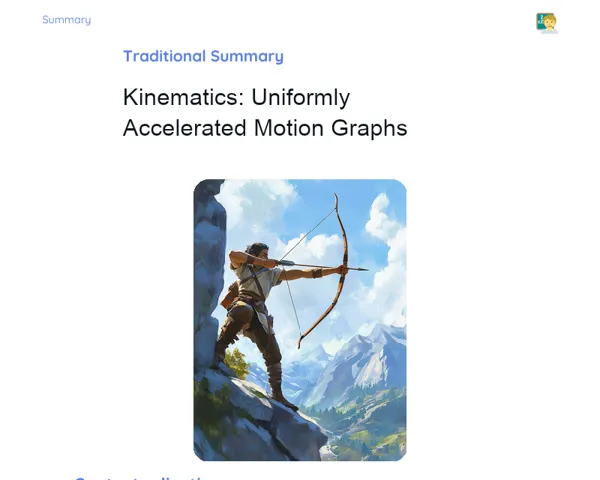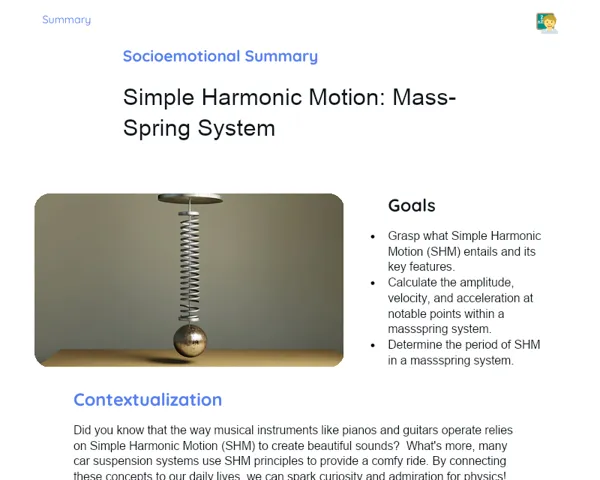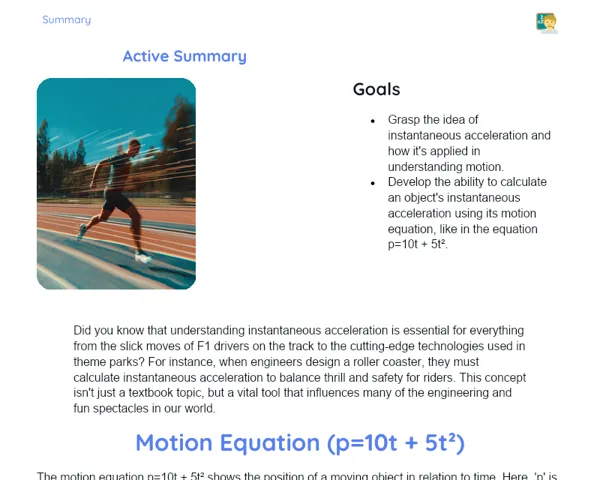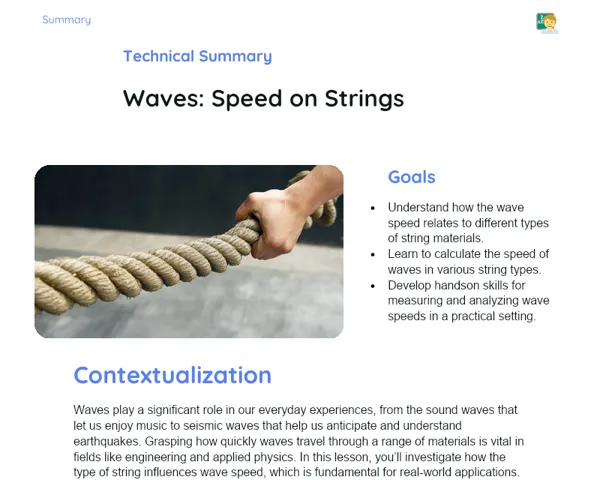Objectives
1. 🇿🇦 Understand and apply the formula for centripetal acceleration (a = v²/r) to solve real-world problems in uniform circular motion.
2. 🔍 Develop the ability to analyze and interpret scenarios involving circular motion, accurately identifying the variables and their relationships.
Contextualization
Did you know that centripetal acceleration plays a vital role not just in physics, but also in many aspects of our everyday lives? For example, in the design of amusement park rides like roller coasters and carousels, a solid understanding of centripetal acceleration is vital to ensure that safety measures are in place to protect riders during their circular motions. This concept not only enhances our grasp of the world around us but also helps us to Innovate and improve technologies that enhance both our enjoyment and safety!
Important Topics
Centripetal Acceleration
Centripetal acceleration refers to the rate at which the direction of an object's velocity changes as it moves in a circle. Unlike tangential acceleration, which alters the speed of the object, centripetal acceleration solely changes its direction, always pointing towards the centre of the circular path.
-
Crucial in circular motions, such as in carousels and around racetrack bends, where it ensures that objects follow safe and predictable paths.
-
Calculated by the formula a = v²/r, where v represents the tangential speed and r is the radius of the circular path. This means that as the radius gets smaller, the required acceleration for maintaining circular motion increases.
-
This understanding is key in accident prevention, helping engineers to design safe road curves and tracks for vehicles and trains to navigate efficiently.
Uniform Circular Motion
Uniform Circular Motion (UCM) describes motion where an object travels along a circular path at a constant speed. This occurs frequently in both nature and technology, such as in electric motors and turbines.
-
In UCM, although the speed remains constant, the direction of the velocity is continuously changing due to centripetal acceleration.
-
Examples include satellites orbiting the Earth, which move in circular paths held in place by Earth's gravity, and helicopter blades, which rotate uniformly to maintain flight.
-
Studying UCM is essential for understanding phenomena like centripetal force, which keeps objects in circular motion, and the centripetal acceleration we calculate to evaluate stability and safety across various devices and systems.
Centripetal Force
Centripetal force is the net force acting on an object moving in a circle, keeping it on its curved path. It's not a new type of force, but rather the effect of the component of force that acts to change the direction of the object's motion.
-
Crucial for understanding the balance of forces in circular motion, especially in conjunction with the inertial force that seems to pull objects outward.
-
It depends on the mass of the object, the tangential speed, and the radius of the curve. Recognising centripetal force is essential for safety in projects involving circular motions, like roller coasters and racetracks.
-
In practical terms, centripetal force can be seen wherever an object follows a circular path, from planets orbiting the sun to cars negotiating bends on roads.
Key Terms
-
Centripetal Acceleration: The rate at which the velocity direction of an object in circular motion changes, always directed towards the centre of the circular path.
-
Uniform Circular Motion (UCM): A motion type where an object travels along a circular path with a constant speed.
-
Centripetal Force: The resultant force on an object in circular motion, responsible for keeping it on its curved track, arising from the interplay of other forces like gravity.
For Reflection
-
How does centripetal acceleration affect the sensation of 'weight' that a person feels on a carousel?
-
Why is it important to take centripetal acceleration into account when designing roads, particularly around curves?
-
In what ways can understanding centripetal force contribute to improved vehicle designs for better safety and performance?
Important Conclusions
-
We delved into the intriguing concept of centripetal acceleration, a fundamental force that influences objects in circular motion, keeping them on their designated paths. We learned how to calculate this acceleration using the formula a = v²/r and its significance across various practical applications.
-
We discussed Uniform Circular Motion (UCM), an essential concept in physics that illustrates how an object rotates in a circle with constant speed while continuously altering direction due to centripetal acceleration.
-
We examined centripetal force, a 'fictitious force' arising from the inertia of moving objects, crucial for keeping them on their circular routes. This force is integral to understanding and crafting devices such as car wheels and aircraft.
To Exercise Knowledge
- Amusement Park Design: Use graph paper to draft a design of a small amusement park, incorporating a carousel and a roller coaster. Calculate the centripetal accelerations required for each attraction. 2. Orbit Simulation: Harness simulation software to explore centripetal acceleration within the orbits of various celestial bodies. Compare the accelerations required to maintain satellites around differently sized planets.
Challenge
🚀 Pilot Challenge: Picture yourself as a testing engineer for a new roller coaster. Calculate the maximum centripetal acceleration passengers could encounter on each loop and adjust the design to ensure that it remains safe, thrilling, and within the limits that the human body can endure.
Study Tips
-
📚 Systematic Review: Regularly revise the concepts of centripetal acceleration, UCM, and centripetal force to reinforce your understanding. Use flashcards or mind maps to structure the information.
-
💻 Virtual Simulations: Explore online simulation tools to visualize and experiment with circular motions involving centripetal acceleration. This hands-on approach can bridge theory and practice.
-
🔍 Real-World Applications: Be observant and identify instances of centripetal acceleration in action, whether it’s the movement of cars around corners or attractions at amusement parks. This will help link theory to daily experiences.



